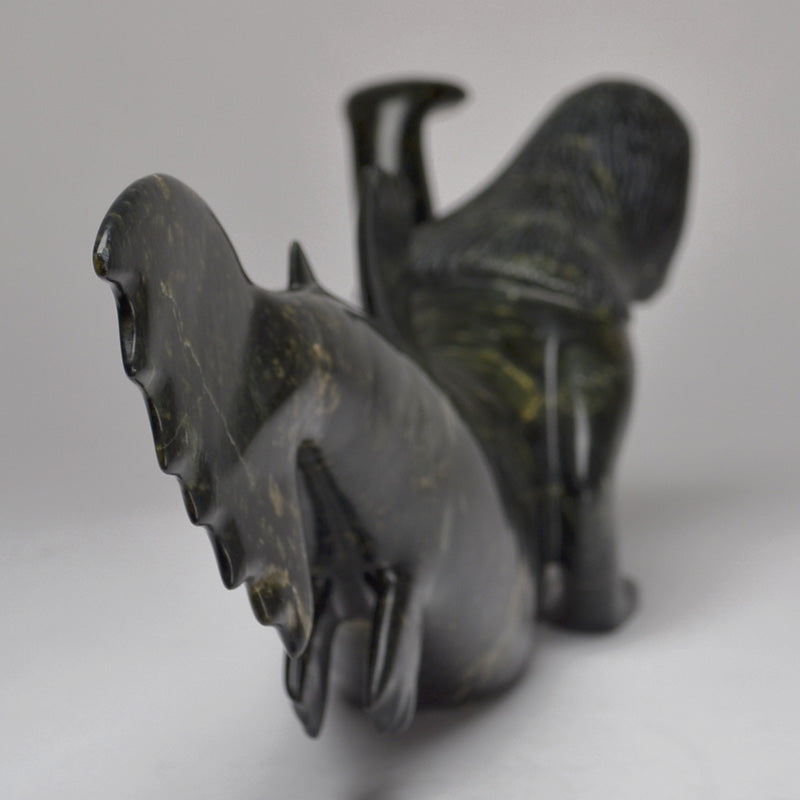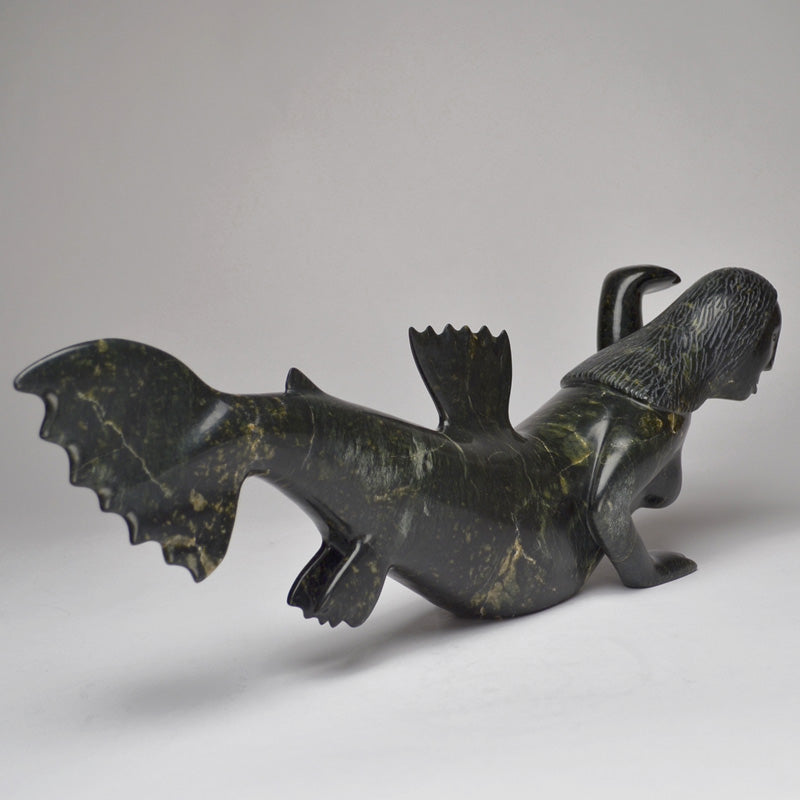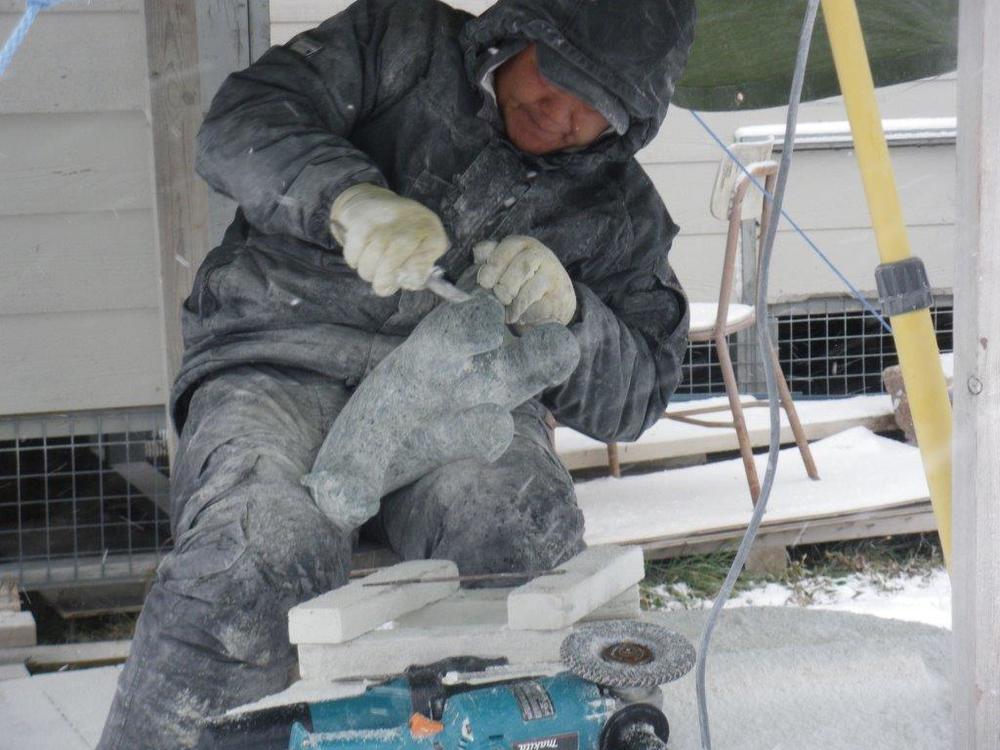Native Art Gallery
Sedna
Sedna
Artist: Ashevak Adla
Community: Cape Dorset
Medium: Soapstone
Dimensions (in): W20.0 x H 7.0 x D5.0
Reference: 105715
Couldn't load pickup availability
Share
Sedna is known as Niviaqsiaq, Talilajuq, Nuliajuk and by many other names. She is the Sea Goddess who drives the walrus and seal to the Inuit and ensures a bountiful hunt. Sedna's story is one of the most popular Inuit Legends.
The Sedna Tales tell of a willfull, strong young woman and a great storm. Long, long ago, when Sedna was a young girl she refused suitors from her own clan, instead Sedna chose a mysterious lover who turned out to be a sea bird in disguise. On hearing what had really happened, her father set out to rescue his rebellious daughter.
Finding Sedna in the nest of the Sea Bird, he spirited her away. Father and daughter began the long journey home in a skin boat. The angry and abandoned seabird made a great storm to stop them. Fearing the great power of the Sea Bird, the father decided to rid himself of his daughter. Sedna was thrown into the sea by her fearful father. Trying to save herself, she grasped the sides of the boat, pleading with her father to pull her back into the boat. The selfish father, fearing for his own life, swung his knife chopping off her fingers.
When Sedna's fingers fell into the water, the fingers became whales, seals and polar bears, her nails became whalebone. As the young woman sank into the sea she was transformed into the mystical being known as Sedna, Mother of Oceans and ruler over all life in the Sea. The blessings of Sedna are still sought by the people of the North who know it is She who sustains them.








Product SKU
Ashevak Adla

Ashevak Adla, born on February 22, 1977, in Iqaluit, Nunavut, is a prominent Inuit carver known for his detailed and polished serpentine stone sculptures. Raised in Cape Dorset, he comes from a lineage of esteemed artists; his maternal grandfather, Aoudla Pee, and paternal grandfather, Kalai Adla, were both influential carvers. Inspired by watching his grandfather carve birds, Adla began his own carving journey at the age of eleven, starting with simple bird and seal heads.
Adla’s work predominantly features Arctic wildlife such as bears, seals, and birds, often depicted in dynamic poses like walking, dancing, or hunting. His carvings are celebrated for their intricate details and high polish, which highlight the natural beauty of the stone. He initially used traditional tools like axes and hacksaws but now prefers power tools for greater precision.
Adla’s art has been showcased in numerous exhibitions both nationally and internationally. Some of his notable exhibitions include "Die Kunst aus der Arktis" in Gutersloh, Germany (1988), "Stone & Bone" in Idaho, USA (1987), "Nature and Transformation: Inuit Art" in Boston, USA (1999), and "Ursa Major: The Great Bear" in Vancouver, Canada (2014). His pieces have also been featured in several important collections and galleries, such as the Inuit Gallery of Vancouver and the Canadian Arctic Gallery in Basel, Switzerland.
Throughout his career, Adla has been influenced by master carvers like Nuna Parr and Kiugak Ashoona, whose detailed and realistic figures inspired his own work. Despite the success and recognition, Adla remains grounded, continuing to live and work in Cape Dorset. He finds inspiration and motivation in his children and enjoys spending time hunting and camping with his family, activities that connect him deeply with his Inuit heritage and the natural world.








